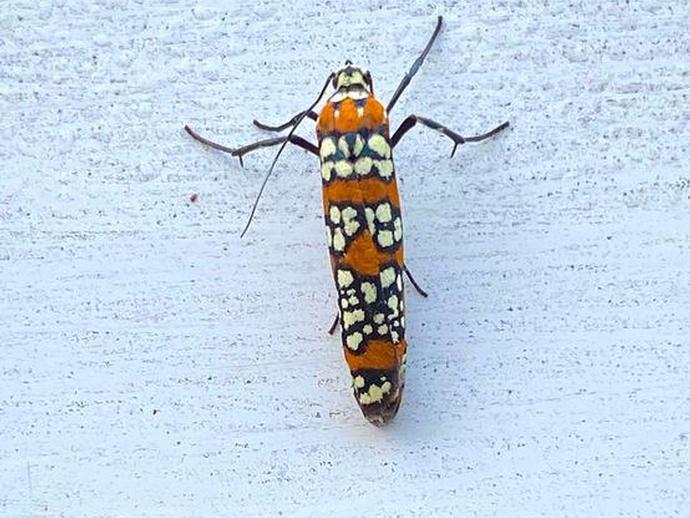November 22, 2021
Ben here with the Monday edition of #BenInNature presented by our friends at Carter Bank & Trust!
The ailanthus webworm moth (Atteva aurea) has long been one of my favorites for its wild coloration! These little moths are said to resemble beetles or true bugs when at rest and resemble wasps while in flight. While they're now a common sight in Virginia, that wasn't always the case; prior to the 1850s, you wouldn't have seen these moths outside of south Florida and the American tropics. So what changed?
Back in the day, the larvae of these moths fed on two trees: Simarouba glauca and Simarouba amara, both of which are found in Florida and/or parts farther south. In the late 1700s, another tree -- Ailanthus altissima, better known as the "tree of Heaven" -- was introduced in the U.S. and quickly became a popular ornamental. By the 1840s, it was available for purchase in most U.S. nurseries, and it quickly escaped cultivation and began to spread.
As it turns out, tree of Heaven belongs to the same family as the two trees that our colorful moth feed on as larvae, and once tree of Heaven began to push its way into southern Florida, it offered the moth a superhighway to travel northward, which it's been doing ever since. In fact, the tree of Heaven is now so ubiquitous that the Ailanthus webworm moth gets its common name not from its original host species, but from the invasive tree it also happens to enjoy!
ABOUT #BenInNature
Social distancing can be difficult, but it presents a great opportunity to become reacquainted with nature. In this series of posts, Administrator of Science Ben Williams ventures outdoors to record a snapshot of the unique sights that can be found in the natural world. New updates are posted Monday - Friday, with previous posts highlighted on the weekends. This series of posts is made possible thanks to the support of VMNH Corporate Partner Carter Bank & Trust (www.cbtcares.com).
NATURE PHOTO IDENTIFICATIONS
If you discover something in nature that you would like help identifying, be sure to message us right here on Facebook with a picture (please include location and date of picture) and we'll have our experts help you identify it!

 Hours & Admissions
Hours & Admissions Directions
Directions

